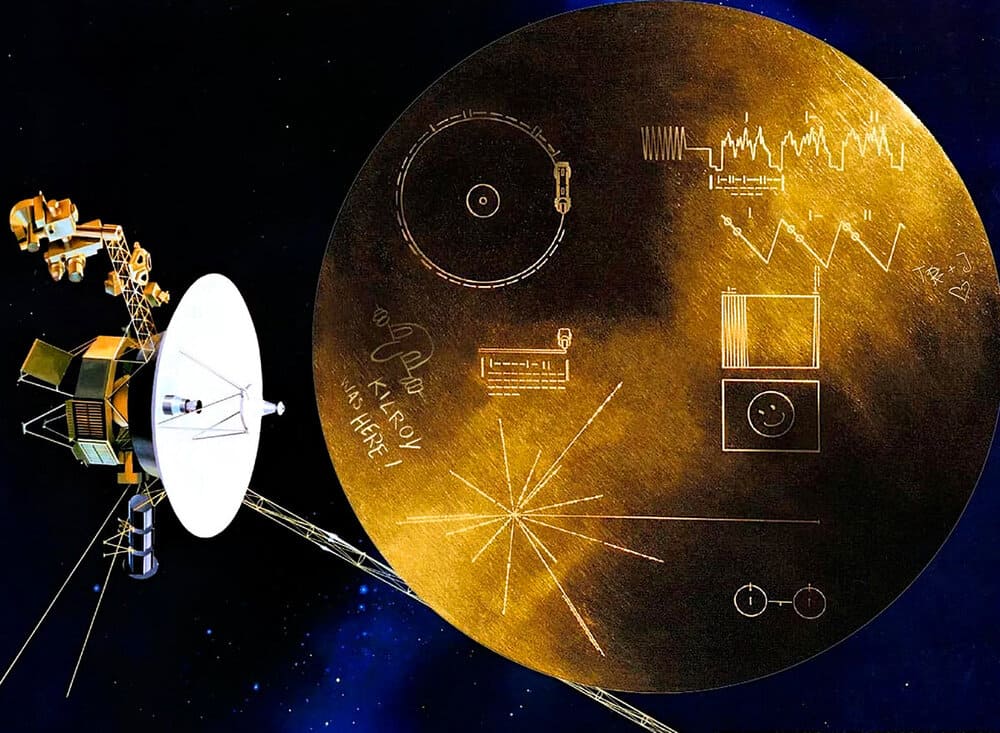Launched in 1977, the twin spaceships of the Voyager mission, represent humanity’s boldest endeavor to explore the outer solar system. Managed by NASA’s Jet Propulsion Laboratory (JPL), the primary mission was to explore the gas giants—Jupiter and Saturn—but the mission expanded to include Uranus and Neptune. The Voyager missions have provided an unprecedented view of our solar system’s outer planets and continue to send data back to Earth from interstellar space.
Mission objectives
The primary objectives of the mission were:
- To conduct close-up studies of Jupiter and Saturn, their rings, and their largest moons.
- To study the magnetospheres of these planets.
- Voyager 2’s extended mission included close-up studies of Uranus and Neptune.
Key discoveries
Jupiter
- Great red spot: detailed images and data of this massive storm.
- Moons: discovered active volcanism on Io and evidence of a subsurface ocean on Europa.
- Magnetosphere: detailed mapping of Jupiter’s magnetosphere.
Saturn
- Rings: detailed structure of Saturn’s rings, including the discovery of ringlets and gaps.
- Moons: observations of Titan’s thick atmosphere and insights into moons like Enceladus, which hinted at a possible subsurface ocean.
- Magnetosphere: mapping of Saturn’s magnetosphere.
Uranus (Voyager 2 only)
- Tilt: discovery of Uranus’s extreme axial tilt and its impact on the planet’s magnetosphere.
- Moons: found new moons and studied the existing ones, revealing their diverse geologies.
- Rings: detailed observation of Uranus’s faint ring system.
Neptune (Voyager 2 only)
- Great dark spot: discovery of a massive storm similar to Jupiter’s Great Red Spot.
- Triton: detailed images and data showing geysers of nitrogen ice and a retrograde orbit.
- Magnetosphere: unique insights into Neptune’s off-center and tilted magnetic field.
Current status
Voyager 1 and Voyager 2 have both entered interstellar space, the region beyond the influence of the Sun’s solar wind. Voyager 1 crossed this boundary in 2012, and Voyager 2 followed in 2018. They continue to send data about the interstellar medium, providing valuable information on cosmic rays, magnetic fields, and the density of interstellar space.
Legacy and future
The Voyager missions have fundamentally changed our understanding of the outer planets and their moons. Their discoveries have fueled further exploration and study, including missions like Galileo, Cassini, and the upcoming Europa Clipper mission. The spacecraft are also carrying the Golden Record, a time capsule intended to communicate the story of our world to extraterrestrials.
The Voyager missions are a testament to human curiosity and ingenuity. Over four decades since their launch, they continue to journey into the unknown, sending back invaluable data and expanding our understanding of the cosmos. The legacy of Voyager will undoubtedly inspire future generations of scientists and explorers.


